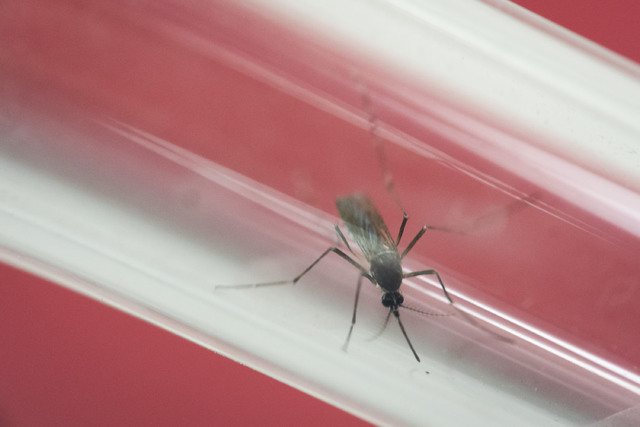Mosquito threat brings different element to outdoor adventures

One of my favorite vacation destinations as a kid was Uncle Frank’s farm. Located in the Uinta Basin of Utah, it was a young boy’s paradise complete with horses and cows, tractors and an old hay derrick, a river and irrigation canals. There was even a trout-filled lake just up the road.
That lake is where I was introduced to a red and white Daredevil spoon. After everything else in Dad’s tackle box had proven fruitless, he dug around and found the Daredevil. With nothing to lose, he tied on the spoon and went to work. The lure landed with a plop and, as he always does, Dad let it sink for a five-count. Then he began turning the handle on his reel.
Almost immediately, Dad felt a jarring hit as a plump rainbow trout took the spoon. His fishing line went straight and his rod tip bowed hard toward the water. The skunk was gone, and that was just enough to send the rest of us scurrying in search of anything in the tackle box that resembled that red and white Daredevil.
It wasn’t long before we all were catching fish.
While the farm provided us with seemingly endless opportunities for fun and excitement, including the chance to chase snakes and avoid skunks, its irrigated alfalfa fields harbored the one critter that kept us kids on the run. We didn’t always see them coming, but there was no mistaking the high-pitched whine of their beating wings as they came searching for our blood.
Thousands of mosquitoes made their home in those alfalfa fields, and after spending their time leeching off the livestock or Uncle Frank, they seemed to like fresh meat like us.
Oftentimes our cousins would come over from their own farm nearby to keep us company. When exploring and climbing the haystack grew old, we would inject a little excitement into our fun by daring each other to run through the alfalfa. The problem was once you started running, there was no turning back. To do so meant running headlong into a black cloud of blood-thirsty syringes with wings.
It wasn’t hard to know which of us took the dare, because whoever it was spent the next two weeks scratching at welts.
At the time, we didn’t see mosquitoes as much of a threat. To us, they represented little more than an itchy nuisance, but today we know these small, blood ingesting insects are capable of delivering much more than itchy welts to their victims. As a society, we knew about things such as malaria and dengue fever, but our tendency was to associate mosquito-borne illnesses with tropical climates in faraway places.
With the arrival of the West Nile virus to the United States, and most recently the threat posed by the Zika virus, it is important for those of us who spend time outdoors to take precautions to limit and even prevent mosquito bites. Though Nevada is an arid state, we still have mosquitoes. Just ask anyone who visits Sunnyside during waterfowl season.
According to the American Mosquito Control Association, “Mosquitoes cause more human suffering than any other organism — over one million people worldwide die from mosquito-borne diseases every year.”
The Centers for Disease Control and Prevention offer the following tips to those who might be traveling or pursuing outdoor interests. Cover up by wearing long pants and long-sleeved shirts. This may present a challenge for some, but it limits the skin areas mosquitoes can access. It also will help to limit sun exposure.
“Use an Environmental Protection Agency (EPA)-registered insect repellent. … When used as directed, EPA-registered insect repellents are proven safe and effective, even for pregnant and breastfeeding women,” according to the CDC.
The CDC recommends repellants whose ingredients include DEET, Picaridin, oil of lemon eucalyptus or IR3535. Also consider staying in facilities with air conditioning or that use window and door screens to limit mosquito access. In some places, you might want to consider using a mosquito bed net.
Freelance writer Doug Nielsen is a conservation educator for the Nevada Department of Wildlife. His “In the Outdoors” column, published Thursday in the Las Vegas Review-Journal, is not affiliated with or endorsed by the NDOW. Any opinions he states in his column are his own. He can be reached at intheoutdoorslv@gmail.com.